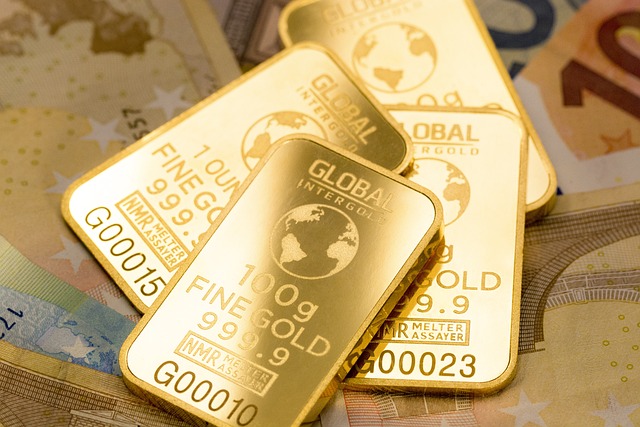Introduction
Converting Individual Retirement Accounts (IRAs) to Gold is a growing trend that has gained significant attention in recent years. As investors seek alternative investment options and hedge against market volatility, converting IRAs to gold offers an attractive way to diversify portfolios and preserve wealth. This article provides a comprehensive overview of the concept, exploring its significance, historical context, and key considerations. Whether you’re an experienced investor or just starting your financial journey, this article will guide you through the world of IRA-to-Gold conversions, highlighting the benefits, challenges, and future prospects.
Understanding Convert-IRA-to-Gold
Convert-IRA-to-Gold refers to the process of transforming Individual Retirement Accounts (IRAs) into gold-backed assets. This involves converting traditional IRA funds or rollover IRAs into physical gold, gold coins, or gold-backed securities. The core components of Convert-IRA-to-Gold include:
- IRA accounts: Traditional, Rollover, or Self-Directed IRAs
- Gold assets: Physical gold, gold coins, or gold-backed securities
- Conversion process: Transferring IRA funds to gold-based assets
Historically, the concept has its roots in the 1970s and 1980s, when investors sought alternative investment options amid market volatility. The rise of gold as a hedge against inflation and market uncertainty led to increased interest in converting IRAs to gold.
Global Impact and Trends
The global impact of Convert-IRA-to-Gold is significant, with key trends shaping its trajectory:
- Increasing demand: Growing investor interest in alternative investments, gold-backed assets, and diversification strategies
- Regulatory changes: Shifts in regulations, such as the Tax Cuts and Jobs Act (2017), affecting IRA conversions and withdrawals
- Market dynamics: Fluctuations in gold prices, economic uncertainty, and global events influencing demand
Regional differences include:
- United States: Strong demand for Convert-IRA-to-Gold driven by market volatility and pension reform concerns
- Europe: Growing interest in alternative investments, particularly among institutional investors
- Asia-Pacific: Increasing demand for gold-backed assets, fueled by economic growth and inflation concerns
Economic Considerations
The economic aspects of Convert-IRA-to-Gold are crucial:
- Market dynamics: Gold prices, interest rates, and market volatility influencing investment decisions
- Investment patterns: Historical trends, risk tolerance, and asset allocation affecting IRA conversions
- Role in economic systems: Convert-IRA-to-Gold as a hedge against inflation, a store of value, or a means to diversify portfolios
Technological Advancements
Significant technological advancements have impacted the Convert-IRA-to-Gold landscape:
- Digital gold storage: Secure online platforms for storing and managing digital gold assets
- Gold-based cryptocurrencies: New investment opportunities combining gold with blockchain technology
- Automated conversion tools: Simplifying the conversion process through software and apps
Policy and Regulation
Policies and regulations governing Convert-IRA-to-Gold include:
- Tax implications: IRA withdrawal rules, taxes on gold sales, and potential tax benefits
- Regulatory frameworks: SEC, IRS, and FINRA guidelines for investment products and transactions
- Legislative changes: Updates to pension reform laws, tax laws, and financial regulations
Challenges and Criticisms
Key challenges and criticisms faced by Convert-IRA-to-Gold:
- Tax implications: Potential tax liabilities and complexities
- Liquidity concerns: Limited liquidity in gold-based assets compared to traditional IRAs
- Investment risk: Gold prices can fluctuate, and market volatility may affect returns
To overcome these issues, consider:
- Diversification strategies: Spreading investments across asset classes to minimize risk
- Risk management: Implementing hedging or insurance strategies to mitigate potential losses
- Professional advice: Consulting with financial experts or investment advisors for personalized guidance
Case Studies
Successful Convert-IRA-to-Gold case studies include:
- Example 1: A retiree converting their traditional IRA to physical gold, reducing reliance on stocks and bonds
- Example 2: An entrepreneur using a Self-Directed IRA to invest in gold-backed real estate development
- Example 3: A family trust converting their inherited IRA to a gold-based investment portfolio
Future Prospects
The future outlook for Convert-IRA-to-Gold includes:
- Growing demand: Increasing interest in alternative investments and diversification strategies
- Technological advancements: Continued innovation in digital storage, gold-backed cryptocurrencies, and automated conversion tools
- Regulatory changes: Potential updates to tax laws, pension reform, and financial regulations shaping the landscape
Conclusion
This article has provided a comprehensive overview of Convert-IRA-to-Gold, highlighting its significance, historical context, and key considerations. Whether you’re an experienced investor or just starting your financial journey, understanding Convert-IRA-to-Gold can help you make informed decisions about your IRA and overall investment strategy.
FAQ Section
Q: Is converting IRAs to gold a taxable event?
A: Yes, IRA withdrawals are generally subject to taxes.
Q: Can I convert my traditional IRA to physical gold?
A: Yes, but consider tax implications and potential penalties for early withdrawal.
Q: How do I choose the right gold-backed investment product?
A: Research different products, consult with a financial advisor, and assess your risk tolerance and investment goals.

IRA Gold Conversion: Diversifying Retirement with Precious Metals
To incorporate gold into an IRA, one must transfer existing funds into a self-directed IRA that allo…….
Read More
IRA to Gold: Diversifying Your Retirement for Inflation and Market Stability
The article provides a detailed guide on converting traditional or Roth IRAs into investments in ph…….
Read More
Gold in Your IRA: Diversifying Retirement Savings with Precious Metals
The article explains how to incorporate physical gold, silver, platinum, and palladium into a Tradi…….
Read More
Golden Retirement: A Guide to Converting IRAs into Precious Metals
Investors looking to add physical gold as an asset to their retirement portfolios via an IRA must o…….
Read More
IRA Gold Conversion: A Guide to Wealth Diversification and Inflation Hedging
To incorporate physical gold into a retirement portfolio via an IRA, individuals must set up a self…….
Read More
Gold as a Retirement Hedge: Navigating IRA Conversions
Transferring an IRA to physical gold as part of a diversification strategy for retirement savings c…….
Read More
IRA Gold Transition: A Guide to Diversifying Retirement Wealth with Precious Metals
Investors looking to diversify their retirement portfolios can include gold or other precious metal…….
Read More
IRA to Gold Conversion: A Guide for Diversifying Retirement Savings
Investors looking to diversify their retirement portfolios and protect against economic volatility …….
Read More
IRA Diversification: The Guide to Converting Retirement Funds into Gold Investments
converting a traditional or Roth IRA into a self-directed IRA that allows for investment in gold, s…….
Read More
Golden Retirement: A Guide to Transforming IRAs into Precious Metals Investments
This discussion covers the strategy of converting a traditional or Roth IRA into an investment in g…….
Read More